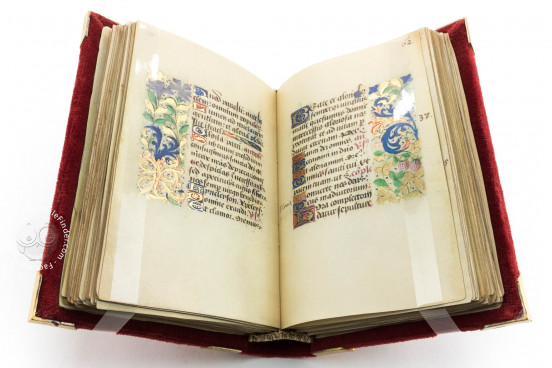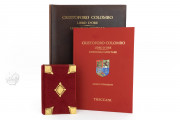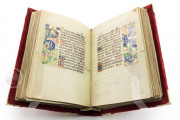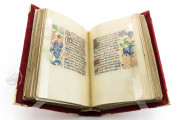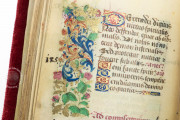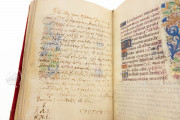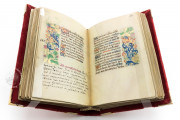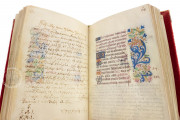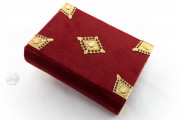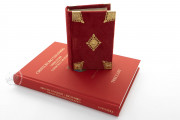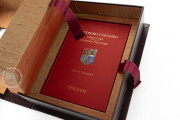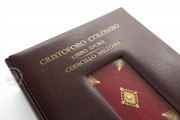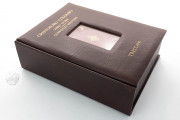Made in France in the second half of the fifteenth century, Columbus's Book of Hours is a manuscript of prayers to be said in Christian personal devotions. One of its initially blank pages bears a forged codicil (an unofficial legal document) concerning the disposition of the book itself and the privileges of the famous Italian seafarer Christopher Columbus (d. 1506). The codicil claims that Columbus received the book as a gift from Pope Alexander VI and specifies that he wills it to the Republic of Genoa.
The prayer book purporting to have been owned by Columbus is an incomplete book of hours, with pages missing and passages erased and written over. The core text is the Hours of the Virgin, a series of prayers structured to be said over the course of the waking day. As is typical of books of hours, the manuscript also includes the Penitential Psalms and the Office of the Dead.
Characteristically French
The writing and decoration of the book are typical of French prayer books of the period. The original text was written by a single scribe in French Bâtarde, which had come to be used for both secular and sacred texts in French or Latin.
The decoration comprises quarter borders—borders restricted to the outer margins of the pages—of fleshy acanthus leaves in gold and blue with little blue, pink, and green flowers. Gold initials on colored grounds mark the beginnings of new prayers.
Annotated in the Sixteenth Century
Two scribes writing in the sixteenth century annotated the manuscript, adding prayers and labeling existing ones. The scribe of the earlier and more extensive series of annotations, dating from the 1570s, was probably also the forger of the codicil.
A Puzzling Forgery
The codicil (fol. 63v) is a curiosity. It proclaims itself as being made "after the manner of soldiers," although Columbus was not on the battlefield when it was supposedly written (May 1506). It claims that the manuscript was a gift from the pope and that Columbus, having treasured it in life, now wished (improbably) that it—and his privileges and income as Admiral of the West Indies—be entrusted at his death to his native Genoa.
An Ambiguous Cryptogram
Despite being long recognized as a forgery, the document has inspired speculation. Not least is the cryptogram "S. / S. A. S. / X. M. i." It has been seen as an anagram for the transliterated Hebrew invocation to the Lord Shaday Shaday Adonai Shaday Chesed Moleh Jehovah or its Latin equivalent. Alternatively (or concomitantly), taking away the Ss, as Christoferens Armiratus Maior Yndiarum "Carrier of Christ, High Admiral of the Indies."
In the Earliest Inventory of the Corsini Collection
The forged text was probably added to augment the value of the mutilated prayer book. It is just possibly the work of Alfonso Ceccarelli (1532-1583): if so, he deliberately imitated Spanish writing (but of his own time, not Columbus's). The manuscript appears in a 1738 inventory of the Corsini family library. In 1883, Tommaso Corsini (1835-1919) donated the Biblioteca Corsiniana to the Accademia Nazionale Reale dei Lincei (now Accademia Nazionale dei Lincei e Corsiniana).
We have 1 facsimile edition of the manuscript "Columbus's Book of Hours": Cristoforo Colombo. Libro d'Ore. Codicillo Militare facsimile edition, published by Istituto dell'Enciclopedia Italiana - Treccani, 2007
Request Info / Price
